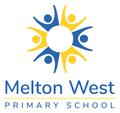Year 5/6

Reading
In term 3, students worked on their ability to synthesise non- fiction texts. Grade 5 and 6 students worked on tapping into their prior knowledge on a specific topic. Text was provided related to that topic in which students had to note down their prior knowledge. With both their prior knowledge and new knowledge gained after reading a text. They were to create a synthesis statement immersing both concepts into one. The analogy that was used to explore the concepts related to synthesis was 1+1=2. Students then moved onto a major focus on questioning where they worked on asking questions before, during and after reading. The students analysed and categorised the types of questions they were asking. In our questioning unit, students also had to distinguish between thin and thick questions in relation to a variety of non-fiction texts and fiction based texts. One such strategy to assist students in looking beyond thin questions was by highlighting key terms in a selected text and creating thick questions using those keywords.
Writing
In Writing this term, the grade 5/6 students followed the writing process of planning, drafting, revising, editing and publishing to write a narrative. Throughout the unit the students focused on further developing their narratives by adding more detail around their characters, setting, complications, events that lead up to the complication and their resolution. The students worked on extending their vocabulary through the use of vivid language and adjectives which are descriptive and precise. The students finished their narrative writing pieces and then moved onto exploring our unit of poetry . The students demonstrated their understanding of different forms of poetry and applied their knowledge of vivid vocabulary to convey images, feelings, mood and tone in their own construction of poems. For example, the students practised using sensory language to convey a vivid picture of places and feelings. The students worked on recognising a variety of poetic devices and utilised them in their own poems. Some of these poetic devices included repetition, personification and metaphors. By the end of this unit, the students worked on being able to recognise and apply a range of structural restraints such as repetition, metaphors, similes, rhyme and rhythms to their own poems.
Mathematics
This term 3, the Grade 5/6 students explored a variety of units in Mathematics. Multiplication and division was our major unit topic. During the unit students explored mental strategies for multiplication and division such as the doubling and halving strategy, the split strategy and multiplying and dividing by ten. In addition, the exploration of a variety of methods to solve multiplicative and division problems was explored by Grade 5/6 students. Students then used their knowledge of factors and multiples to explore tests of divisibility. The minor units that students explored in Mathematics were mass, area, and location. In Mass, Grade 5/6 students explored the use of appropriate weighing devices to compare units of mass and convert units of mass. In addition, 5/6 students also explored various strategies for multiplication and division of decimals by powers of 10. In the area unit, Grade 5/6 students familiarised themselves with the terminology of area and surface area. During the area unit, Grade 5/6 students explored strategies in finding the area of a rectangle and efficient strategies to find the area of composite shapes. Finally, in our location unit, Grade 5/6 students learned the use of directional language to give directions from one location to another and utilise these skills to explore grid references using regions and identify the plot of position on a grid using letter and number alongside.
Inquiry
This term in Inquiry, the Grade 5/6 students explored a History unit titled ‘Bound for Botany Bay’. During the unit the students explored the significant events and people that have impacted on the early development of Australia. They started the unit by tuning into the life of the convict and then moved into the ‘finding out’ and ‘sorting out’ phase of the inquiry where they explored the people who came to Australia and the reasons for why they came. During this phase the students also explored how the Australian colonies developed over time and how the colonial settlement changed the environment. The students then determined how Australia became a nation and the contribution that significant individuals made to the development of Australian society. The students then delved deeper into the areas that interest them the most and then finished the unit by presenting their understanding of a significant event. They explored the impact that this event had had specifically on an individual or group or how an individual or group of people inspired change. The students got to select how they want to present their information, whether it is in the form of a Google Slide presentation, poster or diorama. They then had opportunities to share their learnings with the class through individual reflections, peer discussions, and whole class presentations.
Science
During Term 3, our Grade 5/6 students have been investigating how light from a source forms shadows and can be absorbed, reflected and refracted. They have enjoyed learning about light through videos, hands-on activities and science experiments. Students have participated in conducting science experiments weekly by developing a hypothesis, identifying the variables, following a method, recording the results, engaging in discussion of results and drawing a conclusion. Throughout the unit students have covered the following concepts: classifying materials as transparent, opaque or translucent based on the extent to which light passes through them or is absorbed; the use of mirrors to demonstrate the reflection of light; identify the refraction of light at the surfaces of different transparent materials; recognise that the colour of an object depends on the properties of the object and the colour of the light source; and drawing simple ray diagrams to the paths of light from a source to the eyes.
Art
Students in grades 5 and 6 have had an amazing journey this term as they have studied the distinctive styles of well-known artists including Wassily Kandinsky and Pablo Picasso. The term began with a close examination of Picasso's cubism, which inspired pupils to produce their own portraits in this particular aesthetic. After that, the pupils studied Kandinsky's abstract paintings and created their own abstract artwork using primary and monochrome colours. In order to advance their artistic abilities, students concentrated towards the conclusion of the term on mastering various shading techniques and optical illusion art. Term 3 has been a creative and inspiring term for our grade 5 and 6 kids students!
PE
This was a busy term for the grade 5/6 students with multiple inter school events running again throughout the term. The sports that we entered were basketball and athletics. Our students made us proud and upheld the school values well. Thank you to all staff who help make these events run. In term 4 we finish the year with rugby and look forward to the event running well.
There was much learning taking place for the students in 5/6, firstly students began the term with basketball. Students used a games-based approach for this sport and are now able to engage and play in 3 v 3 games and full 5 v 5 competition games. During this unit students continued to develop their skills for the game of basketball. Students tried to use strategy in the games of basketball and show their ability to work in teams. After this unit had been completed, the 5/6 students moved their focus to the sport of rugby. They again took a games-based approach to their learning and played in modified games of tag rugby. This allowed all students the opportunity to try the sport and develop their skills while playing. The key skill areas that were worked are throwing, catching, dodging and change of speed. All our students did a wonderful job during this unit of work. This term was exciting for the 5/6 students with so many opportunities in sport, they all did our school so proud. I cannot wait for term 4 to see what we can achieve.
Music
This term, in Music, the students combined their understanding of pitch and rhythm patterns in singing and playing songs and melodies. Using tuned percussion, they expanded their understanding of formal notation and used this to read and write simple musical compositions. In particular they learnt about how pitched notes are represented on a stave and composed and played their own one-note melodies. The students learnt about texture in music, where different sounds are played together for effect, learning to play parts together in groups. They paid attention to the musical elements of dynamics and tempo when composing and improvising. Group work included composing and performing their own short pieces of music, using artefacts to stimulate their imagination and creativity. Students learnt class games to consolidate and develop their skills in reading music and working together. Students worked cooperatively in small groups and as a whole class to perform and celebrate their achievements.
LOTE
During Term 3 lessons increased to twice a week. The Year 5/6 students learnt about:
- Deaf Culture
- Feelings
- Greeting and Questions
- Around the House
- Sea Animals
- Days of the Week and Months of the Year
- Numbers 1-100 (using their dominant/writing hand)
- Weather
- Fruit
- Zoo Animals
- Wh Questions
- Handshapes, HOLM+ NMF (Handshapes, Orientation, Location, Movement and Non-Manual Features)
- Feelings (extending on previous learning about feelings)
- About Me
- Clothing
- Medical/Health
The Auslan signs for these topics were the core learning, to extend in future lessons. Lessons consisted of explicit teaching through videos, supported by activities, games, stories, poems and group practice. Learning Auslan involved both expressive (signing) and receptive understanding skills (reading back what others’ sign), hence lesson activities continued to develop these skills. At this level, the students worked in whole groups, organised by the teacher and started activities in pairs or small groups with guidance. The expectation regarding non-voicing and use of phrases, asking and answering questions, continued to be a focus for students. Reflecting on their learning, gave students ‘ownership’, providing them with the opportunity to ‘take charge’ and improve their learning. Students increased content in each lesson, whilst extending their previous learning and expanding with new topics. They combined new signs with known signs (phrases), revising and building their ability to communicate in Auslan. They learned strategies for communicating in Auslan when they didn’t know the signs –gesture, facial expression, Fingerspelling and mime (Constructed Action).The activities continued to encourage the students to practise and move towards small group/partner practise, with increasing confidence and independence.



























